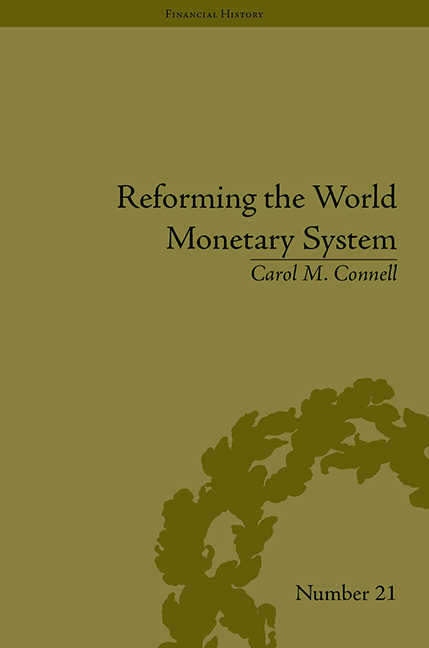Book contents
- Frontmatter
- Contents
- Acknowledgements
- List of Figures and Tables
- Introduction
- 1 A Crisis in Confidence
- 2 Fritz Machlup, his Research and Methodology
- 3 Robert Triffin and the Triffin Plan
- 4 William Fellner and the Intersection of Macro and Microeconomics
- 5 Why Economists Disagree: The Role of Framing in Consensus Building
- 6 ‘Assuring the Free World's Liquidity’ through Multiple Reserve Currencies
- 7 Milton Friedman and the Arguments for Flexible versus Fixed Exchange Rates
- 8 Collaboration with the Group of Ten
- 9 Adjustment Policies and Special Drawing Rights: Joint Meetings of Officials and Academics
- 10 From the Bellagio Group to the Bürgenstock Conferences
- 11 From the Bellagio Group and Joint Conferences of Officials and Academics to the Group of Thirty
- 12 Reassessing the Bellagio Group's Impact on International Monetary Reform
- 13 The Impact of the Bellagio Group on International Trade and Finance Scholarship from the 1960s to the Present
- Conclusions
- Notes
- Works Cited
- Index
7 - Milton Friedman and the Arguments for Flexible versus Fixed Exchange Rates
- Frontmatter
- Contents
- Acknowledgements
- List of Figures and Tables
- Introduction
- 1 A Crisis in Confidence
- 2 Fritz Machlup, his Research and Methodology
- 3 Robert Triffin and the Triffin Plan
- 4 William Fellner and the Intersection of Macro and Microeconomics
- 5 Why Economists Disagree: The Role of Framing in Consensus Building
- 6 ‘Assuring the Free World's Liquidity’ through Multiple Reserve Currencies
- 7 Milton Friedman and the Arguments for Flexible versus Fixed Exchange Rates
- 8 Collaboration with the Group of Ten
- 9 Adjustment Policies and Special Drawing Rights: Joint Meetings of Officials and Academics
- 10 From the Bellagio Group to the Bürgenstock Conferences
- 11 From the Bellagio Group and Joint Conferences of Officials and Academics to the Group of Thirty
- 12 Reassessing the Bellagio Group's Impact on International Monetary Reform
- 13 The Impact of the Bellagio Group on International Trade and Finance Scholarship from the 1960s to the Present
- Conclusions
- Notes
- Works Cited
- Index
Summary
Introduction
Many of the economists drawn into the flexible versus fixed debate had been writing on adjustment and liquidity issues since shortly after the Great Depression and through World War II. Others were young scholars eager to make their mark in the innovative and interdependent areas of international economics and economic policy, tied to theories of comparative advantage, factor-price equalization, trade and welfare, exchange devaluation and forward exchange. Paul Einzig, no enthusiast for flexible exchange rates, considered the focus on flexibility a consequence of the drive for growth at all costs. As previously noted, employment and growth were major issues, as was stability, leading to many different versions for flexible or fixed rate plans.
Chapter 7 examines some of the major arguments for variations in flexible and fixed exchange rate policy options as well as contributions to a theory of payments balance made by the Bellagio Group economists and by their contemporaries. The chapter begins with a brief history of exchange rate choice, moves to a general consideration of floating rates, then considers managed flexibility (slides, glides, crawls, etc.) and a theory of payments balance. The second half of the chapter considers the arguments of economists committed to fixed exchange rates and to an increase or decrease in the price of gold.
- Type
- Chapter
- Information
- Reforming the World Monetary SystemFritz Machlup and the Bellagio Group, pp. 97 - 108Publisher: Pickering & ChattoFirst published in: 2014



